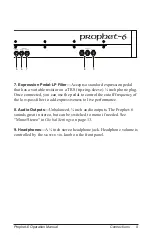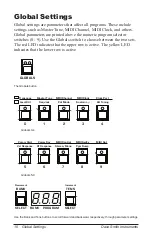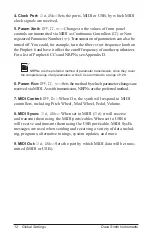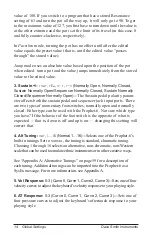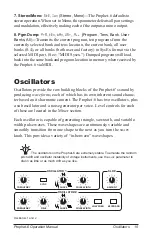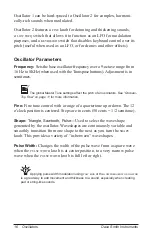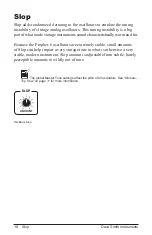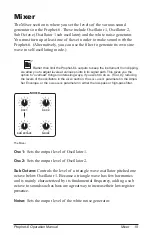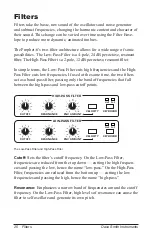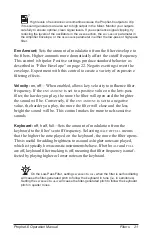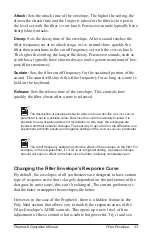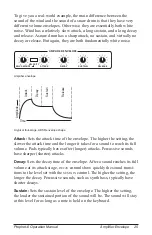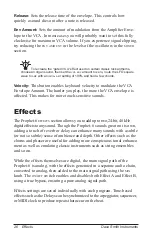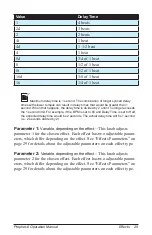
14 Global Settings
Dave Smith Instruments
value of 100. If you switch to a program that has a stored Resonance
setting of 63 and turn the pot all the way up, it will only go to 90. To get
to the maximum value of 127, you first have to turn down until the value is
at the other extreme and the pot is at the limit of its travel (in this case, 0
and fully counter-clockwise, respectively).
In
Passthru
mode, turning the pot has no effect until after the edited
value equals the preset value (that is, until the edited value “passes
through” the stored value).
Jump
mode uses an absolute value based upon the position of the pot
when edited: turn a pot and the value jumps immediately from the stored
value to the edited value.
3 . S/- :
Nor
,
Rev
,
n-r
,
r-n
(Normally Open, Normally Closed,
Sustain Normally Open/Sequencer Normally Closed, Sustain Normally
Closed/Sequencer Normally Open)—
The Sustain pedal polarity param-
eter affects both the sustain pedal and sequencer jack input ports. There
are two types of momentary footswitches, normally open and normally
closed. Either type can be used with the Prophet-6. Not sure which type
you have? If the behavior of the footswitch is the opposite of what is
expected — that is, down is off and up is on — changing this setting will
correct that.
4 . Alt Tuning:
Nor
,
1
…
16
(Normal, 1…16)—
Selects one of the Prophet-6’s
built-in tunings. Set to
normal
, the tuning is standard, chromatic tuning.
Choosing 1 through 16 selects an alternative, non-chromatic, non-Western
scale that can be used to emulate ethnic instruments or in other creative ways.
See “Appendix A: Alternative Tunings” on page 59 for a description of
each tuning. Additional tunings can be imported into the Prophet-6 as a
SysEx message. For more information, see Appendix A.
5 . Vel Response:
0-3 (Curve 0, Curve 1, Curve 2, Curve 3)—
Sets one of four
velocity curves to adjust the keyboard’s velocity response to your playing style.
6 . AT Response:
0-3 (Curve 0, Curve 1, Curve 2, Curve 3)—
Sets one of
four pressure curves to adjust the keyboard’s aftertouch response to your
playing style.










